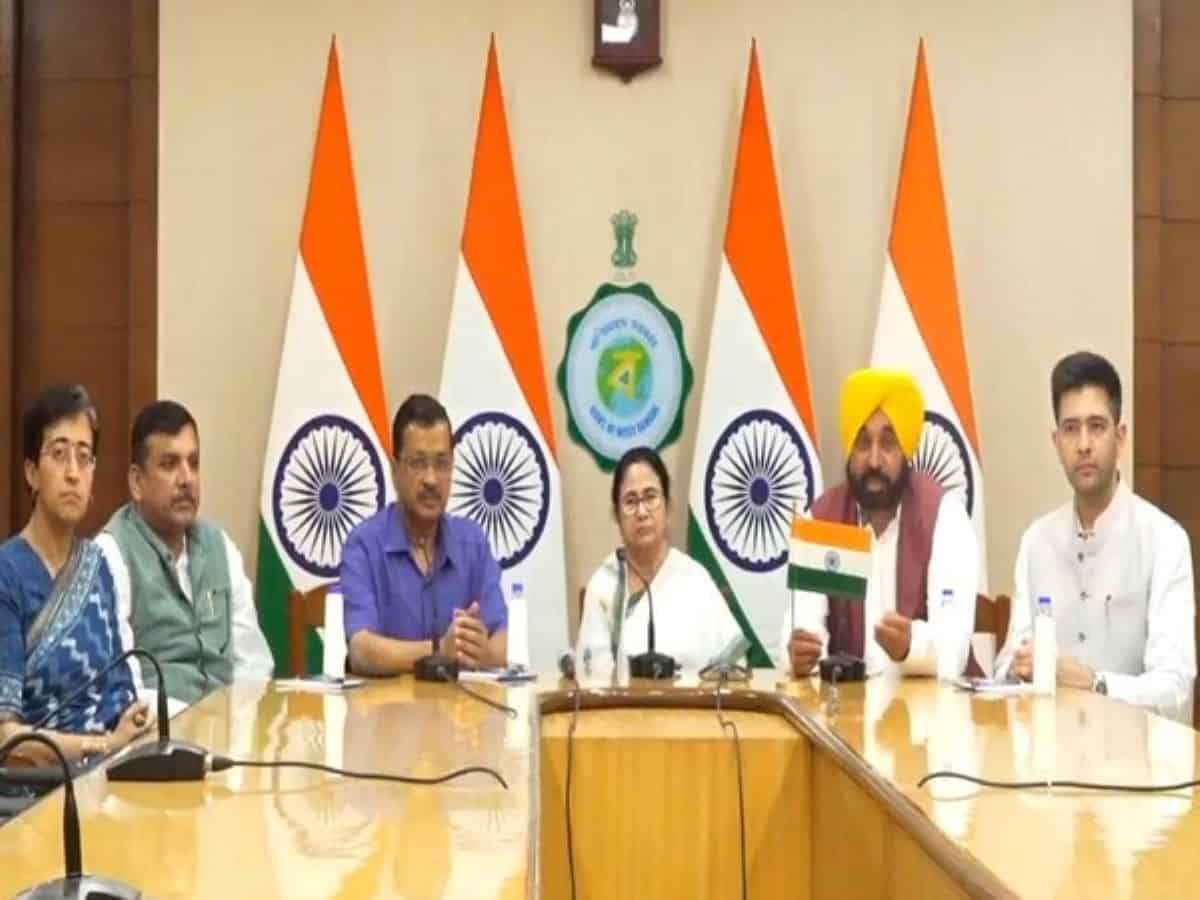
One of the first things Prime Minister Narendra Modi did soon after assuming office nine years ago was dismantling the Planning Commission with a legacy of 65 years and set up the Niti Ayog in January 2015.
Even as the chief minister of Gujarat earlier, Modi had some ideas for a stronger Centre-State relationship and reforms. He hoped that Niti Ayog would strengthen this relationship.
However, Modi still faces Opposition from the non-BJP-ruled states. They have been ganging up against him due to their political differences. The new chief minister’s club is growing by the day as they work in tandem.
Unsurprisingly, acting as a pressure group, some non-BJP chief ministers had boycotted Saturday’s Niti Ayog meeting addressed by Modi. The conference’s theme was “Viksit Bharat @2047: Role of Team India.” These chief ministers could have participated and discussed 100 issues identified for the session. Instead, they stayed away.
Nineteen Opposition parties also boycotted the inauguration of the new Parliament building on May 28. They held that President Draupadi Murumu and not Modi should have that honour.
Those who boycotted include Mamata Banerjee (West Bengal), Arvind Kejriwal (Delhi), Ashok Ghelot(Rajasthan), K.Chandra Shekhar Rao ( Telangana), Bhagawant Mann (Punjab), Nitish Kumar (Bihar), M.K.Staliin(Tamil Nadu), Pinaray Vijayan(Kerala), and Naveen Patnaik( Odisha).
The last name was a surprise addition as Patnaik had been keeping equidistance from both Congress and BJP. He is said to have been upset that President Draupadi Murmu, hailing from Odisha, had not been invited to the inauguration of the new Parliament.
K.C. Rao skipped the Niti Ayog meeting even last year. Having a running battle with the Centre, he claimed, “Chief Ministers do not get enough time to speak, and after a few minutes, a bell rings saying you should stop now.”
Mamata Banerjee wanted a revival of the Planning Commission instead of Niti Ayog, which she called a “paper tiger”. Other chief ministers gave some excuses for their absence, like prior engagements.
It was clear that they worked in tandem.
It is not the first time such boycotts have taken place. Even during the Indira Gandhi era, late Andhra Pradesh chief minister N.T.Rama Rao walked out of the National Development Council protesting against the Centre. Doyens like late Jyoti Basu. Ramakrishna Hegde and others, too, had walked out of the NDC meetings. Late Tamil Nadu chief minister J. Jayalalithaa left the Planning Commission meeting that she needed to be given adequate time.
As for Saturday’s Ayog meeting, should the chief ministers have shown their anger by boycotting it, or should they have participated and explained their misgivings? They could have attended the meeting and presented their grievances or worn black flags. After all, it was a forum for interaction with other chief ministers and the Centre.
The BJP sees the boycotts of the Aayog meeting and the inauguration of the new Parliament building as part of the Opposition’s “Modi hatred”.
There have been several questions about the relevance of the Niti Ayog and its predecessor Planning Commission. While the Commission was seen as a White elephant, the Niti Ayog is seen as a toothless institution.
The Planning Commission had two primary duties-implementation of the five-year plan and providing Finances to the states.
NITI Aayog has no constitutional or statutory sanction. Its stated aim is to construct a dynamic and robust nation. Unlike the Planning Commission, it has no financial role. It is mainly the country’s premier think tank. The Aayog has two hubs: “Team India Hub” and “Knowledge and Innovation Hub”.
In addition to developing long-term, strategic plans for the Government of India, the Aayog supports a federal cooperative structure. Critics say that it should focus on the implementation rather than only concentrating on the recommendations of the policies.
India has emerged as a major global economy. The Ayog will be unable to transform an unequal society into a modern economy. It cannot influence public or private investment or policymaking. It needs to answer specific questions like why 90% of the workers are in the unorganized sector.
Ayog should evolve into a much stronger organization. It lacks the states’ confidence, particularly from the non-BJP chief ministers. An active collaboration will be needed to ensure cooperative federalism’s success.
Strangely healthy competition among the states worked well during the Covid period. Prime Minister held Zoom conferences and involved the chief ministers in pandemic relief. However, politics entered on Covid relief later with the non-BJP chief ministers complaining of step-motherly treatment from the Centre.
Overall, the NITI Aayog needs to evolve into a much stronger organization. If it wants to be more effective, it requires the trust of the non-BJP chief ministers and their active participation. Only then a strong centre and strong states will emerge.
